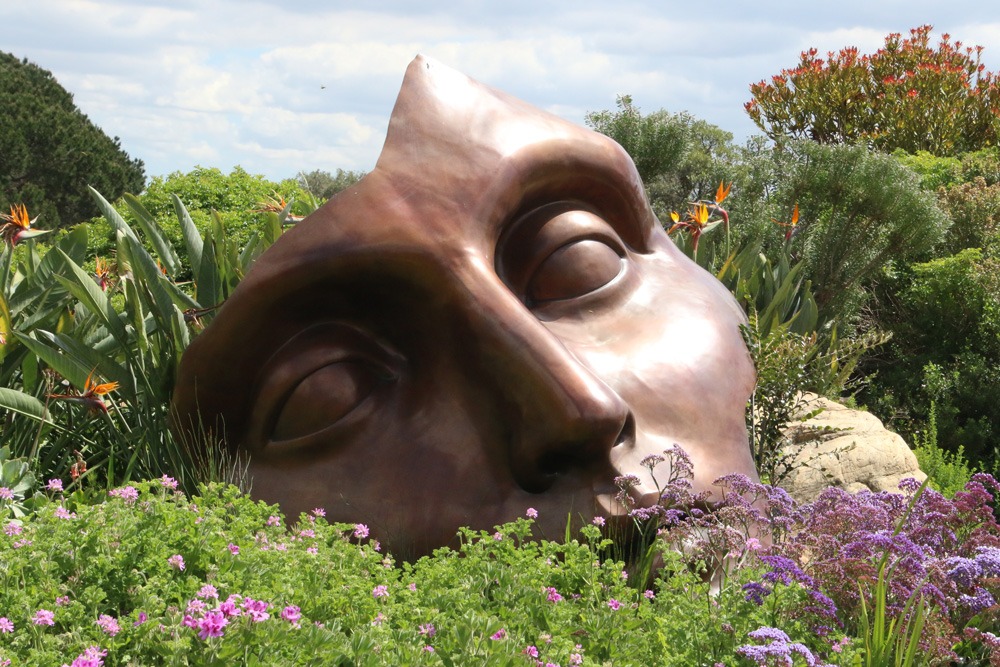
Climate change will fundamentally change the environment. Rivers, the lifeblood of the Earth, will dry up, leaving behind barren riverbeds. Desertification will overtake swathes of forests. Biomes that were once bountiful in biodiversity will be devastated by the ensuing environmental catastrophe.
The impact on humans is most often used as the lens to describe the devastation wrought by climate change. In climate justice discourse, there is little recognition of the broader impact on the entirety of natural existence. The growing jurisprudence of environmental personhood offers a unique perspective for recontextualizing the impact of climate change.
Environmental personhood is a legal concept that designates environmental entities the status of a legal person. The concept recognizes that nature has rights and that a court of law should enforce those rights. As a result, the environment is given robust and expansive legal protections independent of its connection to human interests.
Christopher Stone initially advanced the idea of environmental personhood in Should Trees Have Standing? Towards Legal Rights of Natural Objects. Stone argued that if an environmental entity is given legal personhood, it cannot be owned and has the right to appear in court. However, when he first advanced the idea that forests and rivers should have a voice in court, it was met with ridicule.
Until recently, environmental personhood was a fringe legal doctrine. However, the principle has recently undergone a kind of revival. Its growing relevance in contemporary environmental justice is intrinsically linked to the influence of indigenous ways of seeing the relationship between human beings and the world. Global legal developments are a testament to the impact that indigenous populations are having on discourse regarding the protection of the environment.
A Global Movement Gains Ground
In 2008, Ecuador made history. It became the first country to change its constitution to reflect rights for nature. Bolivia swiftly followed in 2010. Both instances of legislative changes coincided with a rise in political power for indigenous groups. In both countries, the influence of indigenous people’s worldviews was apparent in the importance of Pachamama—”nature” in the language of the indigenous Quichua and Aimara groups.
Under Article 71 of Ecuador’s constitution, nature has the right “to exist, persist, maintain and regenerate its vital cycles, structure, functions and its process in evolution.” Every person and community has the right to advocate on behalf of nature. Nature escapes direct personification in the constitution. Instead, nature is the bearer of rights—a defined entity distinct from human interests.
Bolivia’s legislative protection operates similarly. The legal recognition of nature is done in the collective public interest. The Law of the Rights of Mother Earth strips human persons of their dominance over nature. The law creates a holistic legal foundation to protect nature as a system instead of discrete features such as forests, rivers, glaciers, et cetera.
In New Zealand, a different approach was taken, but one that was still rooted in the expression of how indigenous communities view their relationship with nature. For example, for a Maori tribe (iwi), sub-tribe (hapu), or extended family group (whanau), a particular river or mountain might be an ancestor (tupuna). This is a crucial part of their worldview. This worldview was influential in granting personhood to the Whanganui River and the forest Te Urewera.
The attribution of personhood to discrete natural features is growing in relevance.
In 2014, the Supreme Court of India allowed Article 21—the right to life—of India’s constitution to be extended to non-human animals. In 2021, the Canadian government recognized the legal rights of the Mutesheku Shipu (Magpie River). Environmental personhood is becoming a global movement to acknowledge both indigenous law and the rights of nature.
Beyond Human Interests
The movement has a valuable role in the goals of climate justice and represents a radical way of talking about the environment. The prevalent language for talking about the environment and climate justice concerns human interests. For example, Switzerland has a constitutional provision recognizing that the rights of natural entities are linked to the dignity and security of humans. The provision predates Ecuador’s constitutional amendments regarding the rights of nature, but Ecuador’s amendments represent a revolutionary way of recognizing the rights of nature as independent of human interests.
Sign up for our free newsletters
Subscribe to NPQ's newsletters to have our top stories delivered directly to your inbox.
By signing up, you agree to our privacy policy and terms of use, and to receive messages from NPQ and our partners.
The codification of the environment with human interests represents an anthropocentric view of the environment built upon extractive values. In Friction, Anna Lowenhaupt Tsing illuminates how humans describe nature as being full of resources ready to be exploited by human hands. We neatly demarcate land ownership, delineating how we can use the land and how we should protect it in the circumstance of environmental destruction.
Arguments for environmental protection follow similar patterns—such as allowing people to experience nature, reducing the harm done to the food chain for human consumption, or controlling how economic development can occur. These arguments are rooted in the same goals: protecting human life and health. It is an approach to environmental protection embedded in the ecological philosophy of the 19th and 20th centuries: nature is to be used for human exploitation.
However, as we wade through the current climate crisis, anthropocentric perspectives rooted in human exploitation shift towards more practical, long-term views of environmental protection. The goals are based on pivoting towards protecting the Earth for future generations. Arguments regarding immediate climate change action are often justified based on being custodians for the Earth our children will inhabit.
This approach comes from noble intentions, but, as Laurence Tribe noted in 1974, a sense of duty towards the environment that gives rise to some effort to act on its behalf “will be translated into the terminology of human self-interest.” As a result, a nature-based approach to protecting nature is preferable to a human-centered one. Doing so gives a voice to a previously voiceless entity. Developments to grant personhood to natural entities place nature on the same legal level as other legal persons (like corporations). Moreover, it sets out a series of rights outside of the ambit of human dominion.
A Challenge to Extractive Capitalism
Environmental personhood possesses the ability to disrupt the capitalist legal framework. It represents a collective ontological project to rebel against the human tendency to transform nature into an exploitable resource. At the core of this concept is the drive for nature to become an actor in social history. Environmental personhood seeks to find connections between nature and culture. It recognizes that human beings are part of nature; we cannot exist without nature. Yet, due to the abstract way we engage with nature, by reducing it to something that exists on the periphery, we lose sight of our connection to nature.
Environmental personhood has a practical value for climate justice outside of its ontological value. The rights of nature can be used as the basis for climate litigation. There are only a few climate change cases invoking the rights of nature according to the Global Climate Litigation Report: 2020 Status Review. An April 2021 decision by the Supreme Court of Pakistan saw the court recognizing the need to protect the rights of nature, stating that “the environment needs to be protected in its own right.”
The impact of these cases is currently unclear. Outcomes tend to vary based on the framing of a claim. However, the growing number of lawsuits sets a precedent for national and local governments to act against climate change by opposing projects that might destroy a particular ecosystem, mainly due to the future effects of rising greenhouse gas emissions. Furthermore, the lawsuits contextualize the harm climate change poses for marginalized communities, particularly Indigenous communities whose livelihoods and cultural and spiritual practices depend on the unique ecosystems in which they live.
Recognizing that the Earth is a living system of which humans are a part—rather than as human property to be owned and destroyed—is a fundamental departure from the climate capitalism that permeates throughout global trade, environmental policies, and treaties worldwide. Environmental personhood represents a solution to climate change whereby we stop treating the Earth as a commodity. The current climate capitalism system fails to sustain and regenerate life because it is built on a flawed foundation of ceaseless industrial extraction and pollution. Furthermore, it is defined by the privatization and commodification of nature.
Climate capitalism treats the environment as exploitable property. Companies are greenwashing their climate action campaigns while injecting carbon emissions into the atmosphere. They use reforestation as a badge to declare themselves carbon-neutral while creating systems that increase inequality and expedite the destruction of ecosystems.
The recognition of the rights of nature acknowledges that human activities must not interfere with the ability of ecosystems to absorb their impacts, regenerate their natural capacities, and thrive and evolve. It requires that those responsible for destruction—including corporate actors and governments—be fully accountable.
It is a radical legal change that conflicts with the existing legal order. Environmental personhood requires us to uproot established western concepts of property rights, individualism, and endless economic growth. However, such conflicts are necessary and urgent if we are to achieve radical climate change action soon.








